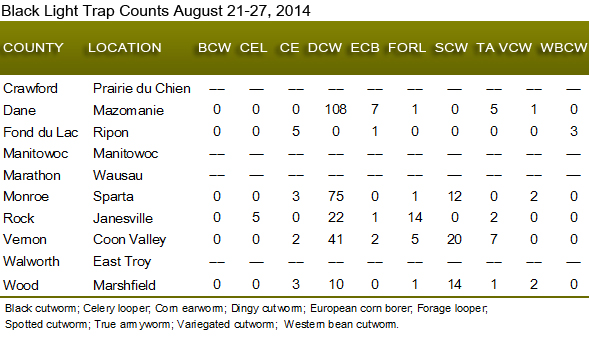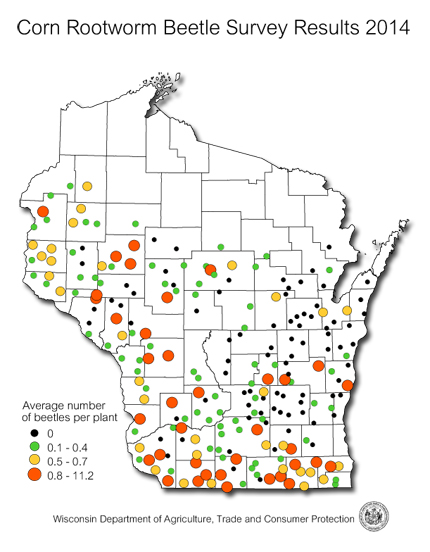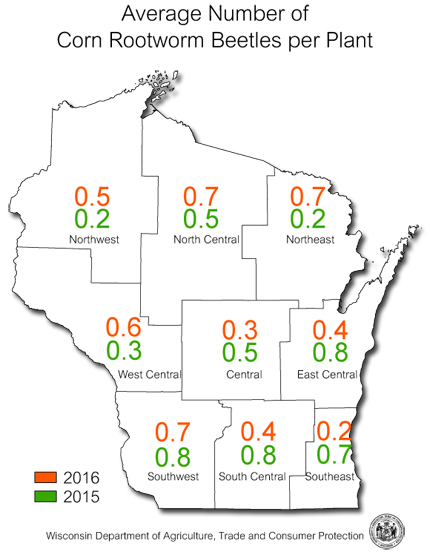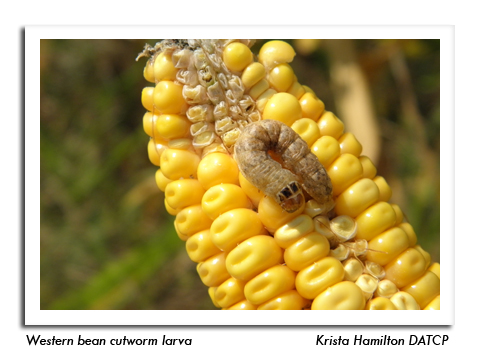
 |
|
|
Corn
Volume 59 Number 17 Date 08/28/2014 CORN ROOTWORM - Results of the August beetle survey indicate populations are lower than last year across the eastern half of the state and higher in portions of western Wisconsin. District averages in the state's nine crop reporting regions ranged from 0.1-0.9 beetles per plant and compare to averages of 0.2-0.8 per plant in 2013. The most significant decrease was documented in the southeast where the average declined from 0.8 to 0.4 per plant. Beetle counts also decreased in the south-central area, from 0.5 in 2013 to 0.3 in 2014. Conversely, the largest population increase occurred in the southwest district where the average rose from 0.6 to 0.9 beetles per plant, although part of this increase was due to an exceptionally high count of 11.2 per plant in a Lafayette County field. Excluding this count, the district average would have been equivalent to the 2013 average at 0.6 per plant. Above-threshold counts of 0.75 or more beetles per plant were found in 37 of 229 (16%) fields surveyed, which is lower than last year's 18% and well below the five-year average of 25%. The statewide average of only 0.4 beetle per plant is the lowest since 2010. WESTERN BEAN CUTWORM - Light damage to corn was noted this week in Jackson and Monroe counties, where an estimated 1-3% of ear tips were infested with late-instar larvae. Most of the population is advanced and should enter the pre-pupal stage by early September. A few late moths are still appearing in black light traps but the flight has essentially ended. The 2014 trapping survey documented the smallest flight in in the ten-year history of the program, collecting only 502 moths in 103 traps (five moths per trap average). EUROPEAN CORN BORER - Second generation larvae range from second- to fifth-instar in the southern and west-central counties. Larval infestations affecting 2-20% of the plants have been reported in a few late-planted sweet corn fields, but most sites appear to have had adequate control. Nearly all of the older, fourth and fifth-instar larvae present by late August will enter diapause and will not pupate until next spring. -- Krista Hamilton, DATCP Entomologist 





|
|
|